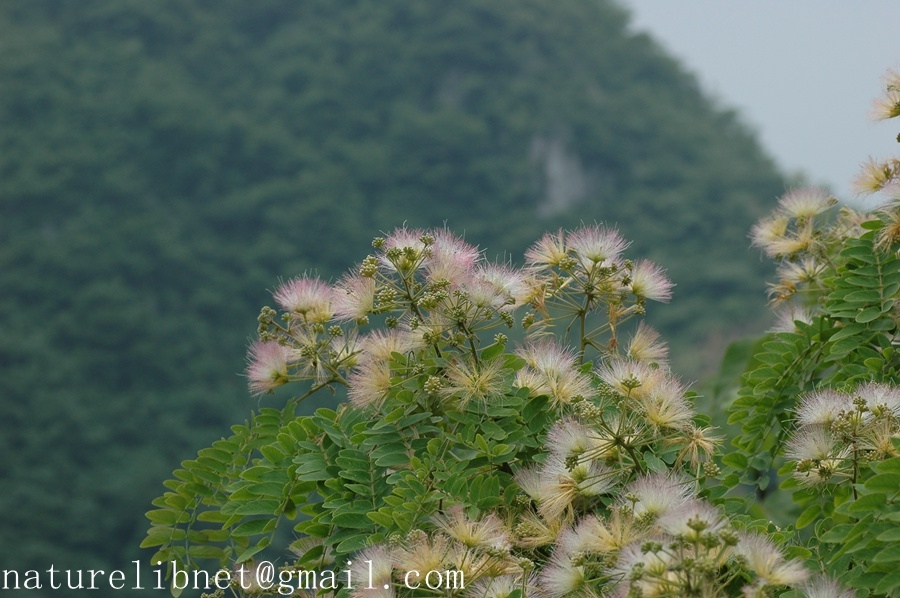- Scientific Name: Albizia kalkora (Roxburgh) Prain
- Ref: J. Asiat. Soc. Bengal, Pt. 2, Nat. Hist. 66: 511. 1897
- Synonyms: Mimosa kalkora Roxburgh, Fl. Ind., ed. 1832, 2: 547. 1832; Acacia macrophylla Bunge; Albizia esquirolii H. Léveillé; A. henryi Ricker; A. longepedunculata Hayata; A. simeonis Harms.
- Chinese Common Name: 山槐 shānhuái
- Japanese Common Name: オオバネムノキ [大葉合歓の木] ōbanemunoki
- Family: Fabaceae
- Genus: Albizia
- Distribution: Thickets, thin forests; sea level to 2600 m. Anhui, Fujian, Gansu, Guangdong, Guangxi, Guizhou, Hainan, Henan, Hubei, Hunan, Jiangsu, Jiangxi, Shaanxi, Shandong, Shanxi, Sichuan, Taiwan, Zhejiang [India, Japan, Myanmar, Vietnam].
- Photo: 05/25/2008, Gaoshancun, Lin’an
Trees, small, or shrubs, deciduous, 3-8 m tall. Branchlets dark brown, pubescent, with conspicuous lenticels. Stipules inconspicuous; leaf glands 1.5-3 cm above base, and at junctions of distal pairs of pinnae, circular to elliptic in outline; pinnae 2-4 pairs; leaflets 5-14 pairs, oblong or oblong-ovate, 0.8-4.5 × 0.7-2 cm, both surfaces pubescent, main vein slightly close to upper margin, base oblique, apex obtuse, mucronate. Heads 2-7, axillary or terminal, arranged in panicles. Flowers dimorphic, primarily white, turning yellow, with conspicuous pedicels. Calyx tubular, 2-3 mm, 5-toothed, calyx and corolla villous. Corolla 6-8 mm; lobes lanceolate. Stamens 2.5-3.5 cm, basally connate into a tube; tube shorter than corolla tube. Ovary glabrous; stipe ca. 1 mm. Legume dehiscent, ligulate, 7-17 × 1.5-3 cm, pubescent when young, glabrescent when mature. Seeds 4-12, obovoid or suborbicular; pleurogram oblong. Fl. May-Jun, fr. Aug-Oct. 2n = 26.(Flora of China)
